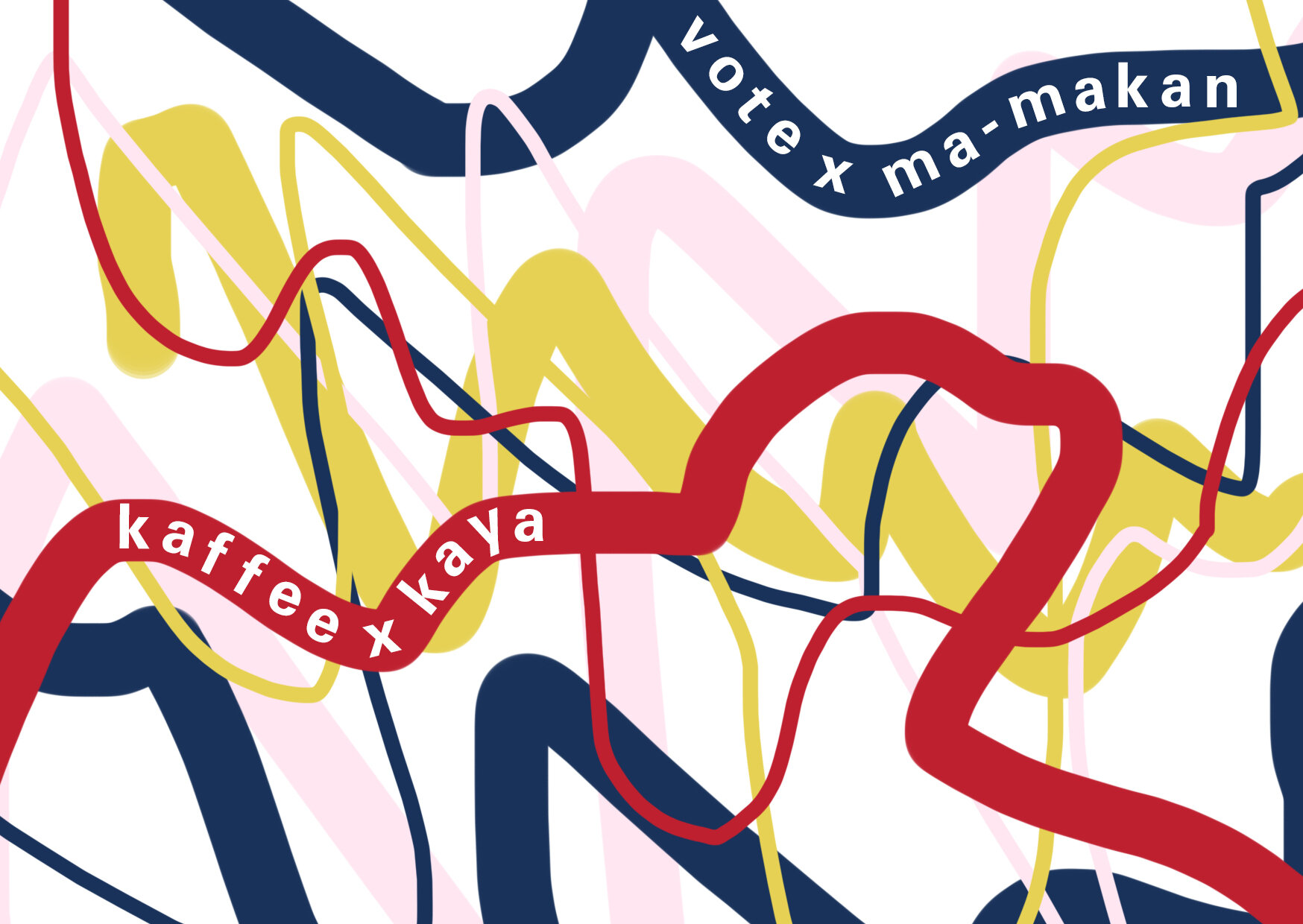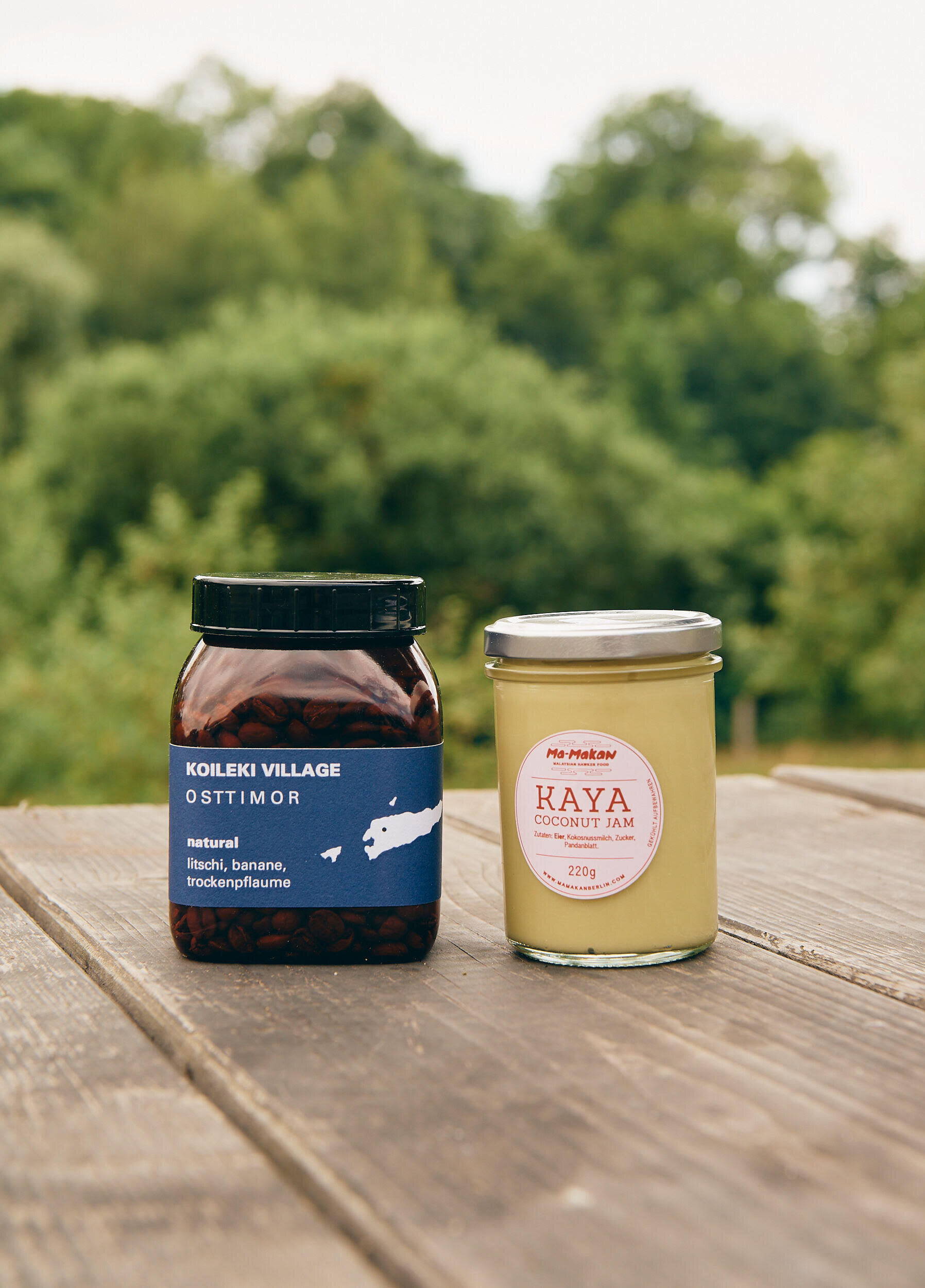
Kaya + Coffee : Collaboration with Ma-Makan
Share

Photo credIt: Ben Moenks
Design credit: Sigurrós Eiðsdóttir
KAYA & KAFFEE
Whenever we buy a new coffee at Vote, we taste it over and over again, searching for flavours that it reminds us of, then learning how to enhance these notes in the roasting process.
What makes this process fun is that everybody experiences the flavours of coffee differently. There are hundreds of aromatic compounds found in coffee, so it would be strange if we all tasted the same thing. Tasting, just like every other sense, is deeply personal and evocative. The flavours and smells that we perceive are informed by experiences, food cultures and environment. Everyone articulates flavour differently. Many people think of things they’ve eaten, others think in terms of colours, even music. “It tastes purple” is frequently-heard phrase at our cupping table. The taste descriptors that we list are just a guide: you should never feel bad because you "don’t get the flavours on the label.”
From day one, this beautiful coffee from Koileki Village in the Atsabe region of Timor-Leste reminds us of Ma-Makan’s Kaya jam. We taste (among other things) caramelised sugar sweetness, coconut creaminess, and florals that remind us of Kaya’s key ingredient (and the secret behind that beautiful pistachio colour): pandan. Rather than simply talking about flavour, we thought that we’d let you try it for yourself.
We hope that, through collaborations like this, we can also try to broaden the often Euro-centric lexicon of flavour descriptors that we associate with coffee. We know that coffee can sometimes taste like blackberry and apple, but coffee-producing countries are also home to a plethora of fruits, for example, that you’ll rarely find in Berlin. Certain herbs, such as pandan or fenugreek/methi are often very close to certain positive vegetal flavours you’ll find in coffee.
On a personal level, it’s fun to learn about new foods and flavours. On a industry-wide level, we hope that broadening our “flavour descriptor database” can a) help us to be more accurate when describing coffee, and b) use flavour references that include, rather than alienate, coffee drinkers from producing countries.
This project was inspired, in-part by this video by Ārāmse below. We recommend watching!
A BIT ABOUT THE COLLABORATION:
----------

KAYLIN, FOUNDER, MA-MAKAN
For me, Kaya is a very comforting and familiar taste. Not only because I grew up on it, but also because it reminds me of my holidays in Singapore visiting my grandma and relatives.
It's been really exciting for me to introduce people here to Kaya who have never tried it before. I love watching their reaction as they first eat it. Even if you've never had it before, it's somehow really comforting.
I initially started Ma-Makan because I couldn't find this kind of food that I love and grew up on, in Berlin. I wanted to show not only my friends but also the public and other food lovers this cuisine that I find so special.
---------
LAUREL, HEAD ROASTER, VOTE COFFEE
This coffee was grown in the area around Koileki village in the Ermera region of East Timor. The coffee cherries were processed at the nearby Atsabe mill, which is run by Ameta Dacasto Alves. Ameta is a young community leader and rising superstar of the coffee scene. We think that his skill and expertise are what make this coffee taste so good!
East Timor, or Timor-Leste, is one of the world’s youngest sovereign states, situated near Indonesia and Papua New Guinea. In April 2021 extreme flooding and landslides caused severe damage to urban and rural areas of East Timor. 2 EUR of each of these boxes purchased goes towards a relief operation led by Raw Material.

